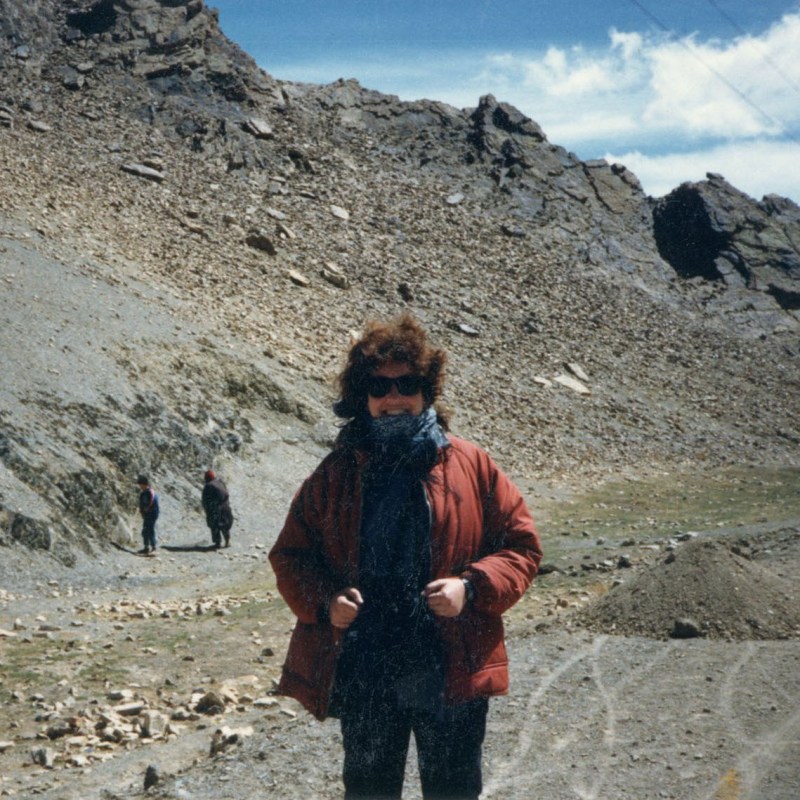
These days my bucket list is a little “pail,” but in the good old days when I was spry enough to hike mountains (okay, walk hills), I worked to earn enough money to chip away at my bucket list at every opportunity.
Videos by TravelAwaits
My Bucket List: The Roof Of The World
I had dreamed of reaching “the roof of the world,” Tibet, from the time I was a little girl. I remember reading and watching anything I could get my hands on about Tibet, from Heinrich Harrer’s Seven Years in Tibet (1952) and Alexandra David-Neel’s Magic and Mystery in Tibet (originally published in 1929) to Everest: The West Ridge (1965), written by Tom Hornbein, and other titles.
By the 1980s, I had become a seasoned solo traveler and had visited countries all over the world. I was ready to fulfill my dream bucket list destination.
Today it is possible to fly to Lhasa. The closest international airport is in Chengdu, and from there the flight to Lhasa takes about 2 and one-half hours. But in the winter of 1987, the “easiest” and least expensive way was to go overland through Nepal. This was the first of my nightmares.
Of Rocks And Mudslides: The First Of My Obstacles
A car had taken us from Kathmandu, the capital of Nepal, to the small town of Kodari on the Nepalese border. We were going to walk across the border to the town of Zhangmu in Tibet and then make our way to Lhasa, about 480 miles away. Roads here were often closed because of rocks and mudslides.
The day that we entered Tibet I had to walk across an expanse with rocks and boulders barreling down. I replayed that scene in my head the entire time I was in Tibet, knowing that I had to make the journey again in the opposite direction. In some ways, the terror I felt lasted throughout my time in Tibet, coloring many things I experienced along the way, though, thankfully, not all.

On The Bus: Skies Of Cerulean Blue
We then stumbled towards a beat-up and ancient Land Rover on the other side and bargained with the Tibetan driver to get us to the main road, where we flagged a bus headed east.
We stopped several times and got out to breathe the thin air — there were no trees and certainly no bathrooms — or much of anything else, except snow-covered mountains in the distance and the most brilliant blue skies I had ever seen.
We visited the giant Tashilumpo Monastery in Shigatse (built in 1447). The countryside we passed was dramatic and serene: The clear and burning sun would soon turn my hair a bright orange, not on the hair dye color palette.

Lhasa seemed overpowering after Shigatse: more people, more buildings, more soldiers, with the ancient Potala Palace towering over the city. It looked unreal after all the photographs I had seen of it in my childhood.
We ended up staying at a nameless guest house, where the unwelcome guests in our room included rats. Friendly Tibetan girls shooed them away from us and tried to stop up the holes in the walls to prevent them from coming in. We ate at street markets or in basic restaurants (although I never did get used to yak butter tea). My travel mate would innocently ask for tastes of my food, and, in my heightened, sleep and oxygen-deprived state, I began to think she was pinching some.
As I traveled through the country, I felt both of my recent molar implants begin to ache and then go bad (they were later removed). That about summed up my mental/dental state in Lhasa.

When we left Lhasa, we headed for the city of Gyantse, where we visited the Palcho monastery, built in 1418. This sacred area in Gyantse is dominated by the Kumbum, a temple that takes the form of a kind of three-dimensional mandala. Within the more than 70 small chambers that encircle the structure are many elaborate paintings, a number of which were created by Newari artists from Nepal, as well as by Chinese and Tibetan ones.
The Final Obstacle: Wild Dogs
After we made it across the roadway back (no rocks or mud, thankfully), I did end up walking down the hill towards Nepal alone because my travel mate took the more difficult path with a group of travelers she met. I wandered on the “easy” path, only to stop short when a pack of wild dogs confronted me and began to growl. I armed myself with nearby rocks, which I threw with some accuracy. I may also have barked at them. Either I did frighten them, or I didn’t appear as tasty as some of the wildlife passing by. I cried with relief because I was OUT.
What I Loved About My Trip To Tibet
- The people: I will never forget the smiles on the faces of people we encountered. Even with the vast language gaps (I had studied Tibetan for 6 months but had a very limited vocabulary that often elicited laughs), people were friendly and kind.
- The vivid colors of nature and art: I remember thinking about the colors created by the people of Tibet. Other than the bright blue of the sky and the lakes, much of the country lacks bright colors. The colors used by the Tibetans — in prayer flags, paintings, thangkas, and brightly-colored jewelry and clothes — were mesmerizing.
What Was Most Difficult About My Trip To Tibet
- I was surprised that the physical difficulties were so profound — the altitude, the political challenges of being in Tibet in 1987, the health challenges, natural disasters like rockslides, and the difficulty in getting from place to place.
- Did I mention rats, wild dogs, low oxygen nightmares, smoke-filled buses, rotting teeth, and mud/rock slides?
Tips For Someone Planning A Bucket List Journey
- Find someone who can do what you can’t. I found an actual trekker to help me climb hills.
- Learn some of the language — even a few words make a difference.
- Become familiar with the culture: read, read, and read.
- Try to get contacts at your destination.
- Write everything down: you’ll be able to reminisce and/or laugh about your experiences.
My final tip about reaching a bucket-list place: I would perhaps not be so starry eyed about a destination, but then, I remember that dreaming is what got me there. Whenever I see a photo of the Potala Palace, I remember the rush of joy and accomplishment I felt upon reaching it.
Check out these informative articles before you plan a trip to Tibet:
